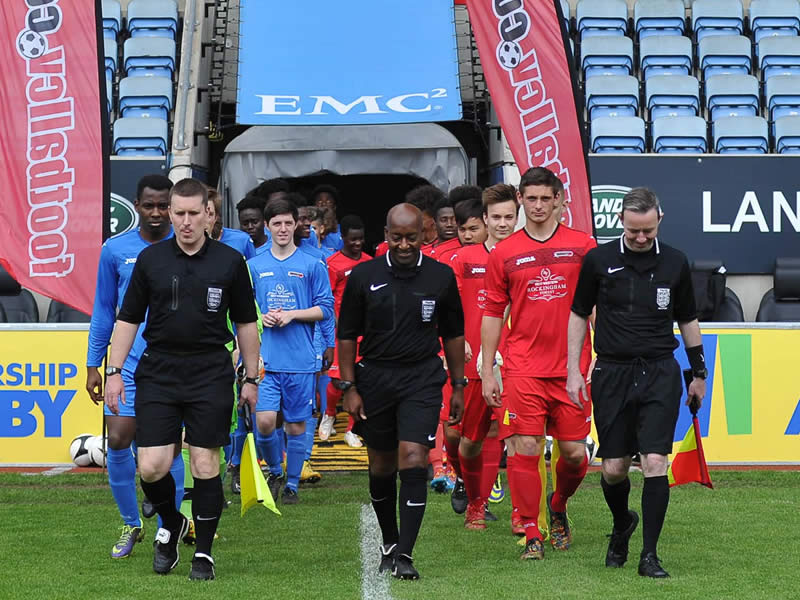A fullback in soccer is a defensive player who mainly operates on the flanks. Fullbacks are responsible for stopping attacks from the opposing team and providing support to their own team’s forwards and midfielders.
They play a crucial role in both defense and offense, as they must possess strong tackling and marking abilities, as well as the ability to make accurate passes and crosses. Fullbacks are often known for their stamina, speed, and ability to cover long distances throughout a match.
Overall, the fullback position is essential in maintaining a balanced and effective soccer team.
Role And Responsibilities Of A Fullback
The fullback position in soccer is an essential role that combines defensive skills with attacking prowess. Fullbacks are positioned on either side of the defense line and play a crucial role in helping their team maintain control on the field. Understanding the responsibilities and expectations of a fullback is vital to appreciating their impact on the game.
Defining The Fullback Position
A fullback, also known as a wingback, is a player who operates in the defensive line of a soccer team. They are positioned on the flanks, either on the left or right side, and act as the first line of defense against opposing attacks. Fullbacks are typically fast, agile, and possess excellent tackling and marking abilities.
Key Responsibilities On The Field
Fullbacks have a wide range of responsibilities on the field, both defensively and offensively. Let’s explore some of these key responsibilities:
| Defensive duties | Attacking contributions |
|---|---|
|
|
These responsibilities highlight the versatility and dynamic nature of the fullback position, requiring players to excel both defensively and offensively.
Overall, a fullback must possess a well-rounded skill set to contribute effectively to their team’s performance. From solid defensive skills to being involved in the attacking build-up, the role of a fullback is crucial in modern soccer.
Different Types Of Fullbacks
When it comes to soccer, the fullback position is often a vital part of the team’s defense and attack. Fullbacks are responsible for covering the flanks and providing support both defensively and offensively. However, not all fullbacks are created equal. There are different types of fullbacks that bring their own unique qualities and playing styles to the game. In this blog post, we will explore the three main categories of fullbacks: traditional fullbacks, wingbacks, and overlapping fullbacks.
Traditional Fullbacks
Traditional fullbacks have a more defensive mindset and primarily focus on their defensive duties. They are responsible for marking the opposing team’s wingers or wide attackers, making it difficult for them to make successful crosses or dribbles. These fullbacks position themselves closer to the central defenders, ready to step in and make tackles when needed.
- Strong defensive capabilities
- Excellent one-on-one defending skills
- Good positioning and awareness
Wingbacks
Wingbacks, on the other hand, are a more attacking version of fullbacks. They have the freedom to push forward and contribute to the team’s offense. Wingbacks often operate in a 3-5-2 or 5-3-2 formation, where they provide width to the team’s play. They play as both defenders and wingers, making them versatile assets to the team.
- Excellent crossing and passing abilities
- Good dribbling skills
- Solid defensive capabilities
Overlapping Fullbacks
Overlapping fullbacks are known for their attacking prowess and ability to provide width in the final third. Their main role is to overlap with the team’s wingers or midfielders and provide an extra option in the attacking buildup. Overlapping fullbacks often catch their opponents off guard, creating numerical superiority and more chances for their team to score.
- Excellent stamina and speed
- Good crossing and passing accuracy
- Solid defensive awareness
Understanding the different types of fullbacks is crucial for coaches and players alike. By recognizing the strengths and weaknesses of each type, teams can optimize their strategies and tactics to fully utilize their fullbacks’ abilities. Whether it’s the solid defending of traditional fullbacks, the attacking threat of wingbacks, or the overlapping runs of overlapping fullbacks, each type brings its own unique style and impact to the game.
Skill Set Required For Fullbacks
A fullback is an essential position in soccer, responsible for ensuring the team’s defense remains strong while providing support in the attack. To excel in this position, fullbacks must possess a unique skill set that combines defensive abilities, physical attributes, and effective communication. Let’s delve into the specific skill set required for fullbacks:
Defensive Skills
Fullbacks are primarily involved in the defensive phase of the game, hence the importance of having solid defensive skills. They must be adept at anticipating and intercepting the opposition’s moves, preventing them from making dangerous advances towards the goal. Solid defensive positioning is crucial for fullbacks, as it allows them to effectively neutralize the opponent’s attacking threats, closing gaps and cutting off passing lanes.
Tackling And Intercepting Abilities
When it comes to tackling and intercepting, fullbacks need to be skilled and assertive. A successful tackle can quickly regain possession for the team and disrupt the opponent’s attacking flow. Fullbacks must be capable of executing well-timed tackles, ensuring they do not commit fouls or risk leaving their defense vulnerable. Moreover, their intercepting abilities play a crucial role in breaking up opposition plays, denying them access to key areas of the pitch.
Physical Attributes
In addition to their defensive prowess, fullbacks also require certain physical attributes to be effective on the field. Speed is essential, allowing them to keep up with speedy wingers or forwards, both defensively and in supporting attacks. Endurance is another crucial attribute, as fullbacks are expected to cover substantial distances throughout the game, providing constant support in both defensive and offensive transitions. Furthermore, good strength and agility enable fullbacks to win physical duels and outmuscle opponents when necessary.
Communication And Organization
While fullbacks play a vital role individually, they are also essential in maintaining the defensive organization as a collective unit. Communication becomes paramount, as fullbacks coordinate with the center-backs, midfielders, and wingers to ensure defensive shape is maintained and marking responsibilities are clear. Effective communication allows fullbacks to provide cover for teammates, communicate potential threats, and adjust defensive positioning based on the opposition’s movements.

Credit: www.soccercoachingpro.com
Fullbacks In Tactical Systems
Fullbacks in soccer play a crucial role in tactical systems, contributing both defensively and offensively. Understanding the role of fullbacks in different formations and how they contribute to team strategy is key to maximizing their impact on the game. Additionally, fullbacks often overlap with wingers or midfielders, creating opportunities for strategic partnerships on the field.
Strongrole In Different Formations/strong
Fullbacks have evolved over the years, adapting to different tactical systems employed by teams. Depending on the formation, the role of the fullback may vary. Let’s explore how fullbacks contribute in some popular formations:
Strong4-4-2 Formation/strong
In a 4-4-2 formation, fullbacks often have a defensive-focused role. They are responsible for marking opposing wingers, preventing them from making dangerous runs and crosses. The fullbacks provide cover for the central defenders, creating a solid defensive line.
Strong3-5-2 Formation/strong
In a 3-5-2 formation, fullbacks have dual responsibilities. They are expected to contribute in both defense and attack. While providing defensive cover, fullbacks also have the freedom to join the attack and support the wingers or forwards. This formation allows fullbacks to act both as defenders and additional midfielders, contributing to the team’s build-up play and width in attack.
Stronghow Fullbacks Contribute To Team Strategy/strong
Fullbacks play a critical role in executing team strategy. They contribute in multiple ways:
- Defensive Support: Fullbacks provide a crucial defensive barrier and support the center-backs during the opponent’s attacks. Their ability to intercept passes, block shots, and make timely tackles can disrupt the opposition’s rhythm and prevent goals.
- Offensive Overlaps: Fullbacks are not only responsible for defensive duties but also contribute to the team’s attack. They initiate overlapping runs, advancing up the flank to create width and stretch the opposition’s defense. By doing so, fullbacks provide passing options and create space for wingers or midfielders to exploit.
- Crossing and Assists: Fullbacks often find themselves in advanced positions during offensive phases of play. Their ability to deliver accurate crosses into the box can create scoring opportunities for the team’s forwards. Fullbacks who possess good technical ability and crossing prowess can be a significant threat in the attacking third.
Strongoverlapping With Wingers Or Midfielders/strong
Overlapping with wingers or midfielders is a common tactic utilized by fullbacks to create numerical superiority and confusion in the opposition’s defense. By coordinating their movement with the winger or midfielder on their flank, fullbacks can create overlapping runs, where one player runs past the other. This strategy not only provides an additional passing option but also forces the opposing defenders to make decisions, potentially creating gaps and opportunities for both the overlapping fullback and the teammate.
In conclusion, fullbacks play a vital role in soccer’s tactical systems. Their versatility, both defensively and offensively, allows them to impact the game in multiple ways. Understanding their role in different formations, their contributions to team strategy, and their ability to overlap with other players is essential for teams to maximize the effectiveness of their fullbacks.
Famous Fullbacks In Soccer History
Fullbacks are an integral part of any soccer team, playing a crucial defensive role while also providing support in the attack. Over the years, there have been several fullbacks who have left an indelible mark on the beautiful game. In this section, we will take a look at some of the most prominent fullbacks in soccer history, from the past to the modern era, as well as those who have shone in international competitions.
Prominent Fullbacks In The Past
During the early years of soccer, some fullbacks stood head and shoulders above the rest, leaving an enduring legacy. These trailblazers contributed to shaping the game, displaying exceptional defensive skills combined with an ability to initiate attacking moves.
- Alberto Torres – Known for his elegance and composure on the ball, Torres was considered one of the finest fullbacks of his generation. His precise tackling, combined with his vision and passing ability, made him a formidable force on the pitch.
- Paolo Maldini – A true legend of the game, Maldini spent his entire career at AC Milan, embodying what it means to be a successful fullback. He possessed exceptional defensive skills, a strong work ethic, and the ability to make crucial interceptions.
Modern Era Fullbacks
In recent years, the role of fullbacks in soccer has evolved significantly. They are now expected to contribute not only defensively but also in the attacking phase of play. The modern era has seen the rise of fullbacks who possess exceptional speed, stamina, and technical ability.
- Dani Alves – Considered one of the best fullbacks of the modern era, Alves was known for his blistering pace, exceptional crossing ability, and relentless work rate. He played a key role in Barcelona’s success during their dominant period under Pep Guardiola.
- Andrew Robertson – A key player for Liverpool, Robertson has established himself as one of the finest fullbacks in the world. His tenacity, defensive awareness, and precise crossing have contributed to Liverpool’s success under Jurgen Klopp.
Notable Fullbacks In International Competitions
International competitions provide a platform for fullbacks to showcase their skills on a global stage. These players have played pivotal roles in helping their national teams achieve success in major tournaments.
| Player | Nationality | Tournament |
|---|---|---|
| Carlos Alberto | Brazil | 1970 FIFA World Cup |
| Philipp Lahm | Germany | 2014 FIFA World Cup |
Carlos Alberto’s marauding runs from deep and his goal in the final of the 1970 FIFA World Cup cemented his status as one of the greatest fullbacks in history. Philipp Lahm, the captain of the German national team in the 2014 FIFA World Cup, showcased his versatility and leadership qualities as he guided his team to victory.
These players, among many others, have left a lasting legacy in the world of soccer, demonstrating the immense value fullbacks bring to their teams. Whether they played in the past or currently make their mark in the modern game, their contributions cannot be overlooked.
Frequently Asked Questions Of What Is A Fullback In Soccer
What Is The Role Of A Fullback In Soccer?
A fullback in soccer is a defensive player whose main responsibility is to prevent the opponent’s forwards from scoring. They often play on the sides of the field and are skilled at both defending and attacking. Fullbacks need to be fast, strong, and have good passing and tackling abilities.
What Are The Key Skills Required To Be A Successful Fullback?
To be a successful fullback in soccer, players need excellent physical attributes such as speed, agility, and endurance. Additionally, they should possess strong defensive skills including tackling, marking opponents, and intercepting passes. Good communication, anticipation, and passing abilities are also important for fullbacks to contribute to the team’s attack.
How Does A Fullback Contribute To The Team’s Attack?
While their primary role is defensive, fullbacks also contribute to the team’s attack by overlapping with wingers or midfielders and providing crosses into the opponent’s penalty area. Their ability to push forward and create attacking opportunities adds an extra dimension to the team’s gameplay.
Fullbacks play an important role in supporting the team’s attacking strategy as well as maintaining defensive stability.
Conclusion
To sum it up, a fullback plays a crucial role in soccer, both defensively and offensively. Their primary duty is to protect the goal and provide support to their teammates. With their athleticism, tactical awareness, and versatility, fullbacks contribute to the team’s success by intercepting passes, making timely tackles, and initiating attacks.
A strong fullback can truly be a game-changer for any soccer team.

General Manager & Auditorial Head.
Killian Jake is a World Sports Traveler and hobbyist sports lover. By exploring different sorts of playing modules like indoor, outdoor, and many more. As for professionalism and writing, it’s helpful to give you the right suggestions on different games and sports.




